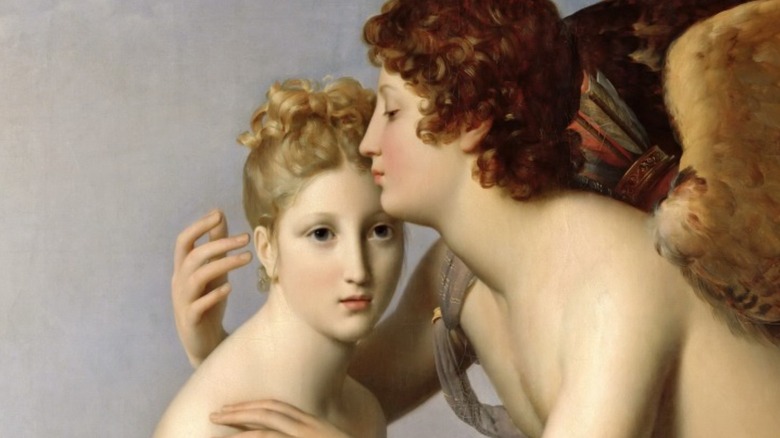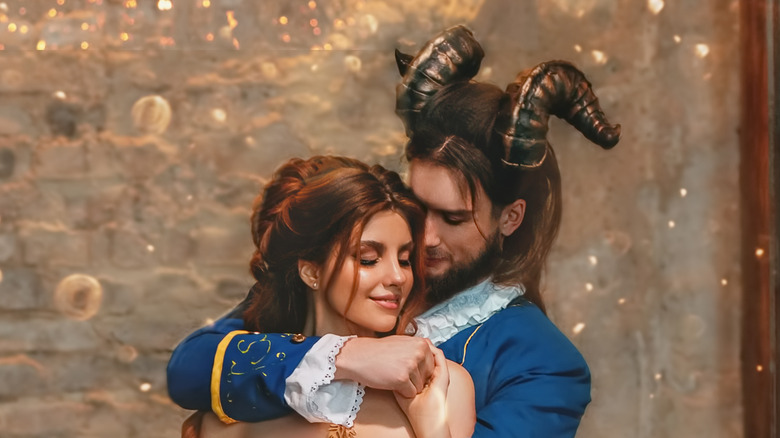The Greek Myth That Inspired Beauty And The Beast
Throughout the company's history, many of Disney's keystone films have been either loosely or directly based on past literature, often being thematically uplifting versions of rather dark stories, such as "Snow White and the Seven Dwarves," "The Hunchback of Notre Dame," and "Pinocchio." As most of these stories were both already popular and well within the public domain, it was relatively easy for Disney to use them for its own purposes.
Another example is 1991's "Beauty and the Beast," heavily based on the 1740 fairy-tale written by female French author Gabrielle-Suzanne de Villeneuve (often attributed to Jeanne-Marie Leprince de Beaumont, who only wrote a later version of the tale). It would seem that her story is itself partly based on prior literature. "Cupid and Psyche" was written in the 2nd century A.D. by Platonist author Apuleius, and was one of the stories which composed his larger novel "Metamorphoses." According to The Collector, there are several objective and subjective similarities which indicate Villeneuve's Greek inspiration.
Psyche and Belle undergo comparable character arcs
As presented in the source material, Belle (named "Beauty" in the original story) and Psyche are the "youngest and prettiest of three sisters." Both characters are forced (or nearly forced) into close romantic proximity with a "beastly" figure (via Owlcation). Belle surrenders herself to imprisonment by the Beast so as to save her father from captivity. The Beast continuously asks an aggravated Belle for marriage, who refuses initially but eventually grows attached to him. In the Greek tale, a jealous Venus intends to have her son Cupid make Psyche fall in love with the "ugliest creature" in existence, which per her intent was a winged serpent.
The smitten Cupid disobeys her and instead imprisons Psyche. As he only visits her while shrouded in darkness, she subsequently comes to believe he is the monster in question. (She learned of this potential fate through an oracle.) Like Belle, she too eventually falls for her captor in what modern readers may identify as an unromantic form of Stockholm syndrome.
An alternate interpretation noted by The Guardian, however, is one of renewed agency. The idea here is that the concluding romances of both stories are ultimately the will of the central female protagonists, since each seeks out her respective jailer again once freed.

